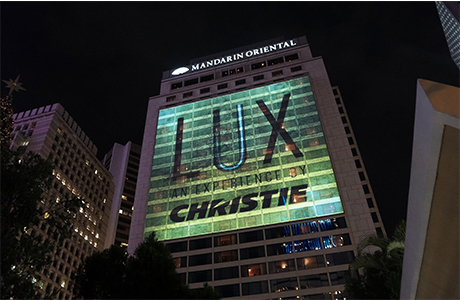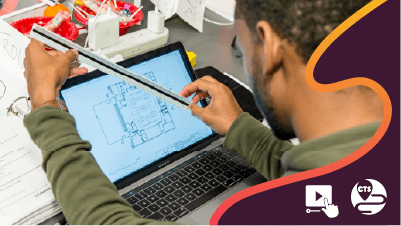Content, Space, and Technology Intersect at Lumieres Hong Kong
During the inaugural Lumieres Hong Kong, visitors to the luxury hotel Mandarin Oriental stopped to pose for a self-portrait, and touched them up with analogue and virtual light brushes to add colourful glowing strokes. Select artworks were then projected onto the hotel facade, illuminating the Hong Kong night as part of a city-wide light festival showcase.
 Lumieres Hong Kong provided a shining example of what happens when content, space, and technology come together to challenge the boundaries of public experiences. From the General Post Office and Mandarin Oriental to the City Hall and the Clock Tower, more than a dozen Hong Kong landmarks were lit and transformed into artists’ canvases. Visual and sound technology provided the medium to captivate city dwellers.
Lumieres Hong Kong provided a shining example of what happens when content, space, and technology come together to challenge the boundaries of public experiences. From the General Post Office and Mandarin Oriental to the City Hall and the Clock Tower, more than a dozen Hong Kong landmarks were lit and transformed into artists’ canvases. Visual and sound technology provided the medium to captivate city dwellers.
“We live in a world where technology-driven experiences are a major part of our daily lives,” said Denys Lavigne, Vice President, Global Christie 360, whose Hong Kong office served as a technology partner for the festival. “Architecture, business, technology, and sociology are now interconnected like never before.”
Connecting the Dots of Experience Innovation
Lumieres Hong Kong is part of a booming trend to push AV beyond live theatre and concerts and into new settings that now include museums, retail, and outdoor spaces. A number of technology breakthroughs have accelerated the adoption of AV tools in reimagining multisensory experiences. One such technology on display at Lumieres Hong Kong was projection mapping.
Projection mapping is a technique that places visual objects onto irregularly shaped surfaces to create highly realistic and vivid images. This capability has opened the door for artists to turn building facades into gigantic screens. In a few of the largest showcases at Lumieres Hong Kong, technology partners Christie and Avollusion deployed a toolkit built around Christie Boxer 4K30 3DLP® projectors and Christie Pandoras Box real-time video processing and show control systems.
Having the right tools is just the beginning. To impress audiences in unexpected ways requires deep cooperation that was atypical in AV projects a few years ago, starting with the design planning stage.
“We’ve come a long way, but historically, our industry has been very siloed. The technical, creative and business strategies were often disconnected,” said Lavigne. “Today’s industry professionals have developed a much better understanding of how the physical, human, and business context in a specific environment needs to be factored in to deliver best-in-class digital media experiences.”
Staying Relevant in an Evolving AV Landscape
As immersive experiences become more ubiquitous and complex, technology showpieces evolve into an even bigger role in business and in communities, industry talent requirements will shift with them.
“It’s about engineering as much as it is about motion design, architecture and environmental design, business strategy, lighting, software development, marketing, strategic planning, and art,” said Lavigne.
“Tomorrow’s AV professionals have to cultivate a wider perspective, whatever his or her role is. Multidisciplinary is the keyword. Over and above core interest, each collaborator needs to have a holistic understanding of how his or her work can positively benefit all of the project’s key elements, and ultimately, the quality of the experience.”
Industry in its Golden Age
In many cities like Hong Kong — where securing permission for public shows is often difficult — the success of a project like Lumieres Hong Kong can spark the imagination for more future spectacles that blend content, technology, and architecture.
“As long as people continue to show interest and fascination for these experiences, we will see more innovation from this industry,“ said Lavigne. “It’s actually happening.”





